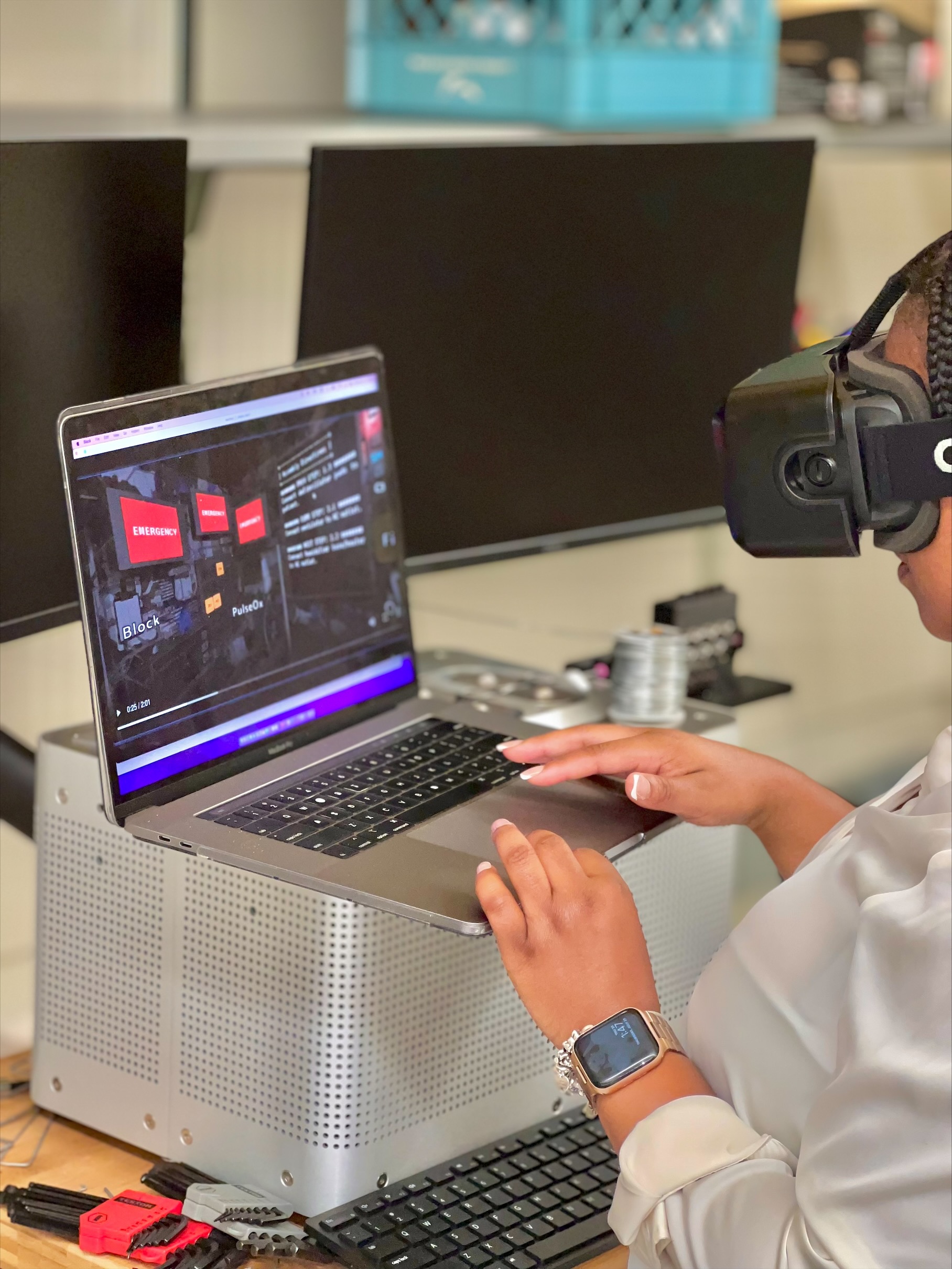Consciously Improving NASA Missions and Operations
Jun 29, 2022 — Atlanta, GA

Astronaut Luca Parmitano is pictured tethered to the International Space Station while finalizing thermal repairs on the Alpha Magnetic Spectrometer.
Most likely you’ve heard of virtual reality and augmented reality, but are you familiar with diminished reality? Diminished reality is probably one of the most unfamiliar forms of computer-aided reality, yet multiple uses of its application can be found all around you. In fact, many of us are using diminished reality to significantly improve our cognitive abilities on a regular basis.
For example, you consciously know reducing the volume of the radio when merging onto a busy highway helps to enhance your driving safety and increase your awareness at that moment. Some workers in a busy office will use noise-canceling headphones to reduce distractions and improve focus and productivity. Or they might strategically place blinders, large notebooks, or their wide screen monitor in a specific location to reduce visual distractions when working in an open office environment. These are examples of diminishing reality to improve productivity and focus. Conversely, augmented reality typically involves adding information or graphics, such as arrows on a map or infographics into a heads-up display to provide additional useful information.
Realizing the benefits of improving cognitive skills, especially in perilous, deep space missions such as traveling to Mars, the National Aeronautics and Space Administration (NASA) selected Anne McLaughlin, professor at North Carolina State University and alumna of the Georgia Tech psychology department, Maribeth Gandy Coleman, principal research scientist at Georgia Tech, and Vicky Byrne, a specialist in medical human factors, with KBR and the NASA Johnson Space Center, to develop cognition aids to help astronauts with a myriad of potential, critical tasks.
The same cognition aid research could also be useful for healthcare workers, emergency personnel, and individuals involved in complex operating environments—such as working in a space station, hospital emergency room, or a complex control room.
“We want to develop novel cognitive aids that assist in long-term space flight,” said McLaughlin who specializes in human factors psychology to help design technical systems that are safer, easier to operate, and perhaps more enjoyable to use. “As psychologists, we know human cognition is extremely limited, especially our memory. A cognition aid can make us more powerful in dealing with the job at hand by improving our memory or drawing our attention to the most important tasks. Astronauts typically deal with many unexpected events and handle numerous simultaneous procedures in small, confined spaces.“
Working closely with McLaughlin is Coleman, associate director of interactive media for the Institute for People and Technology at Georgia Tech. Her research expertise is in the areas of augmented reality, mobile computing, and human-computer interaction. These three researchers want to design, evaluate, and create better virtual environments and leading-edge methods to help users deal with difficult situations.
“As an augmented reality researcher, it is essential to work with researchers such as Anne and Vicky to fully understand how to most effectively support users with our new technologies,” said Coleman. “We’ve got to mediate tasks within a potentially stressful workspace environment so that we don’t remove too much sensory (visual or auditory) information. Similar concerns arise when adding information. Furthermore, our technologies will probably need to help facilitate real-time conversations and provide timely, relevant information presented in the best way and right amount to the user in stressful moments. For NASA, we’re testing a suite of design hypotheses in a systematic study exploring the various ways people could be effectively aided in their tasks.”
Ultimately, their cognitive solutions would be delivered using commercially available augmented reality capable hardware such as virtual reality headsets, in-ear communication devices, bone-conducting headphones, haptic (touch) devices, or other heads-up displays.
Much of their research aligns with NASA’s Human Research Roadmap established in 2005 where NASA focuses research investment on investigating and mitigating the highest risks to astronaut health and performance in support of exploration missions.
“I see our work as heralding in a new class of cognition aids, which can be based on diminishing reality, not just augmenting it, and directing attention where we intentionally remove distractions to increase your attention,” said McLaughlin. “Our research can be applied to all kinds of domains where people are doing work in intense environments and situations such as in emergency medical environments, search and rescue, military, healthcare, in addition to space missions.”

Kala Jordan-research engineer II-using a VR/AR headset.
Walter Rich





